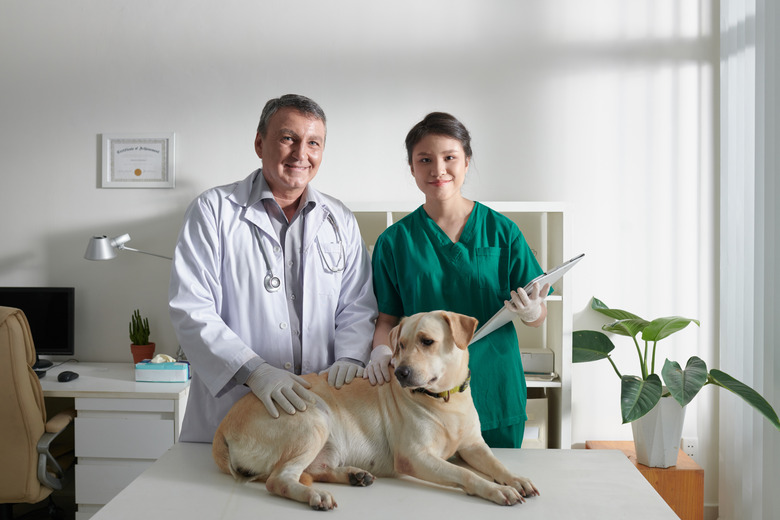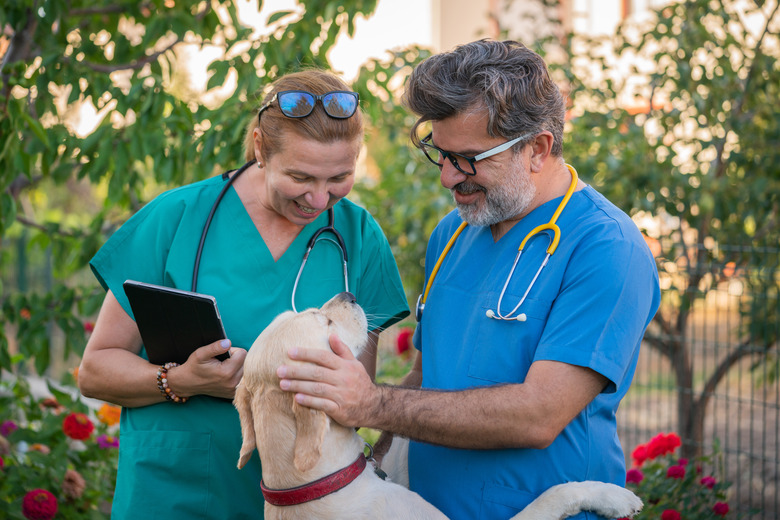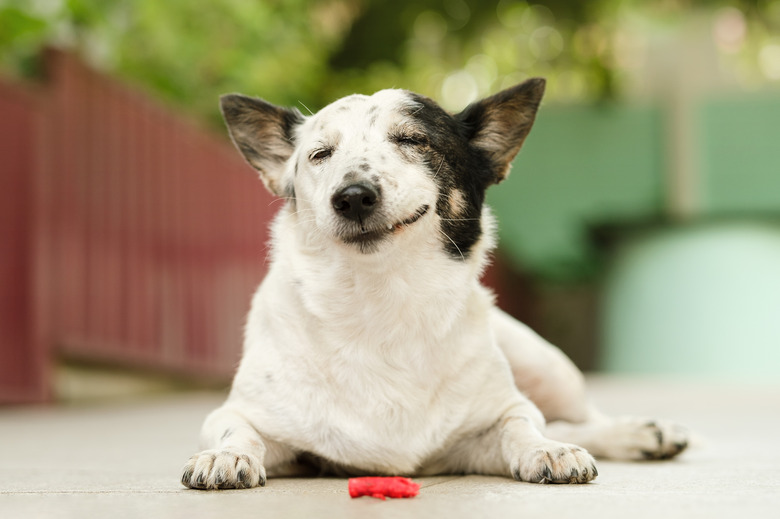What Are The Treatments For Seroma Formation In Dogs?
A seroma is an accumulation of fluid in empty spaces beneath your dog's skin, often occurring at an incision or trauma site. Though the swelling near the sutures or incision site might look alarming and painful, it's generally not a serious condition and is part of the healing process. In most cases, the seroma clears up on its own after surgery, but if it doesn't, a veterinarian can remove the fluid, decrease the swelling, and restore your dog's health and comfort.
Seroma formation in dogs
Seroma formation in dogs
Seroma formation happens when there's an accumulation of serum outside the dog's blood vessels. A seroma doesn't contain red blood cells like a hematoma. But it can occur anywhere on your dog's body, usually under the skin, known as a subdermal seroma. Seromas also can appear on the ear, on the head, or in the brain and other organs, though they're commonly found in high-motion areas, such as the shoulder.
Typically, seromas develop after a surgical procedure if a lot of space is left behind, especially in cases where a large tumor is removed. This space is sometimes referred to as "dead space" and is located in the fatty layer between a dog's skin and body wall muscles.
After some surgeries, such as a spay or neuter, your pet might go home with a bandage that wraps all the way around their chest or abdomen. This wrap helps reduce the chance of a seroma forming. Additionally, your pet might have a drain inserted at the time of the surgery to help prevent seroma. Prevention of issues is key to good pet health.
Seroma symptoms in pets
Seroma symptoms in pets
The classic sign of a subdermal seroma is fluid-filled swelling under the skin. If your dog recently had surgery, you might notice what looks like a buildup of fluid around the incision site. If the buildup of fluid is large enough, it might feel like a water balloon when touched.
A seroma can develop between muscle layers, though it's most often found in the subcutaneous tissue layer (under the skin). Generally, a seroma doesn't hurt or cause lameness, though it can become infected, appearing red with a discharge.
Canine seroma after surgery
Canine seroma after surgery
Some swelling and redness are normal after trauma or surgery as the body heals. It can take up to two weeks for a noninfected incision to heal after surgery. During the first few days is likely when you'll see the most swelling because the body is accumulating cells and serous fluid to heal the wound. If your pet will tolerate it, you can try applying a warm compress to the surgical site for five to 10 minutes two to three times per day.
Bruising and even a bit of blood-tinged fluid seeping out of the wound is also normal. However, excessive swelling and dripping or bleeding from the incision area are signs of trouble. A veterinary follow-up after surgery is not uncommon, and any concerns about healing or post-op complications should be addressed immediately with your veterinarian.
How to treat a seroma on dogs
How to treat a seroma on dogs
In most cases, a seroma will clear up on its own as the dog's body reabsorbs the fluid. However, if your dog's swelling is not decreasing — especially if the seroma is large — or the seroma is showing signs of infection, you should contact your veterinarian. Your veterinarian will likely collect fluid to determine if there's an abscess developing and might decide to aspirate the sac of fluid to help make your dog more comfortable. Occasionally, inserting a drain is necessary for a seroma that won't reduce on its own.
You can minimize the chance of developing a seroma by keeping your dog indoors and confined during recovery. Activity increases the burden placed on any sutures and wound site, leading to swelling and an increased risk of seroma. If your dog is licking the site excessively, they will need an Elizabethan collar, sometimes called an e-collar, to keep them away from the incision site.
The bottom line
The bottom line
Seroma, a buildup of fluid in an empty space left after surgery under your dog's skin, is common after a medical procedure, such as neutering or spaying. A seroma will usually heal itself seven to 10 days after the first appearance of the seroma. However, if there is discharge, excessive swelling, or bleeding, veterinary attention is needed. Dog owners should consult a veterinarian who might drain or aspirate the seroma to make the dog more comfortable during the post-surgery recovery period.


